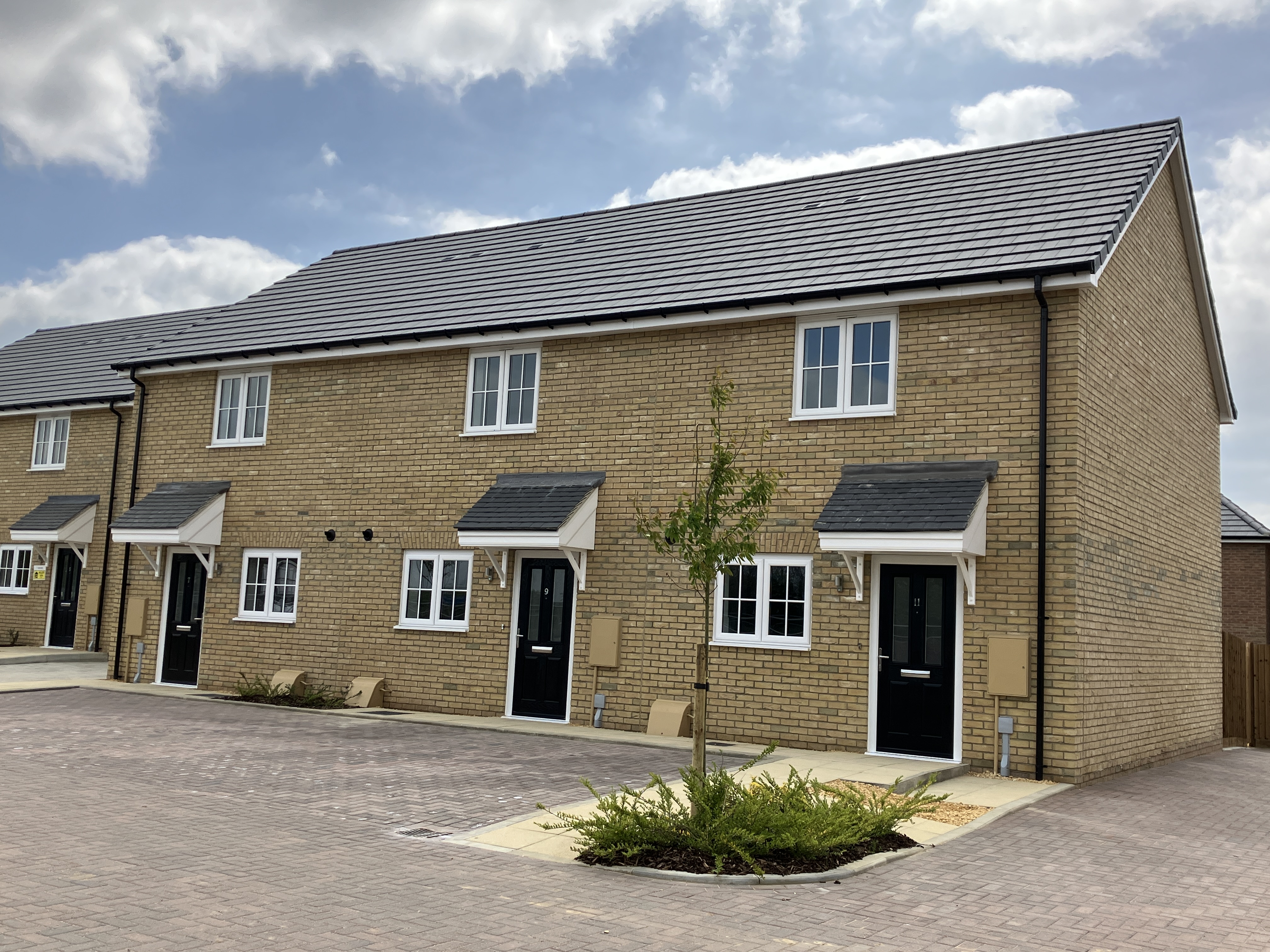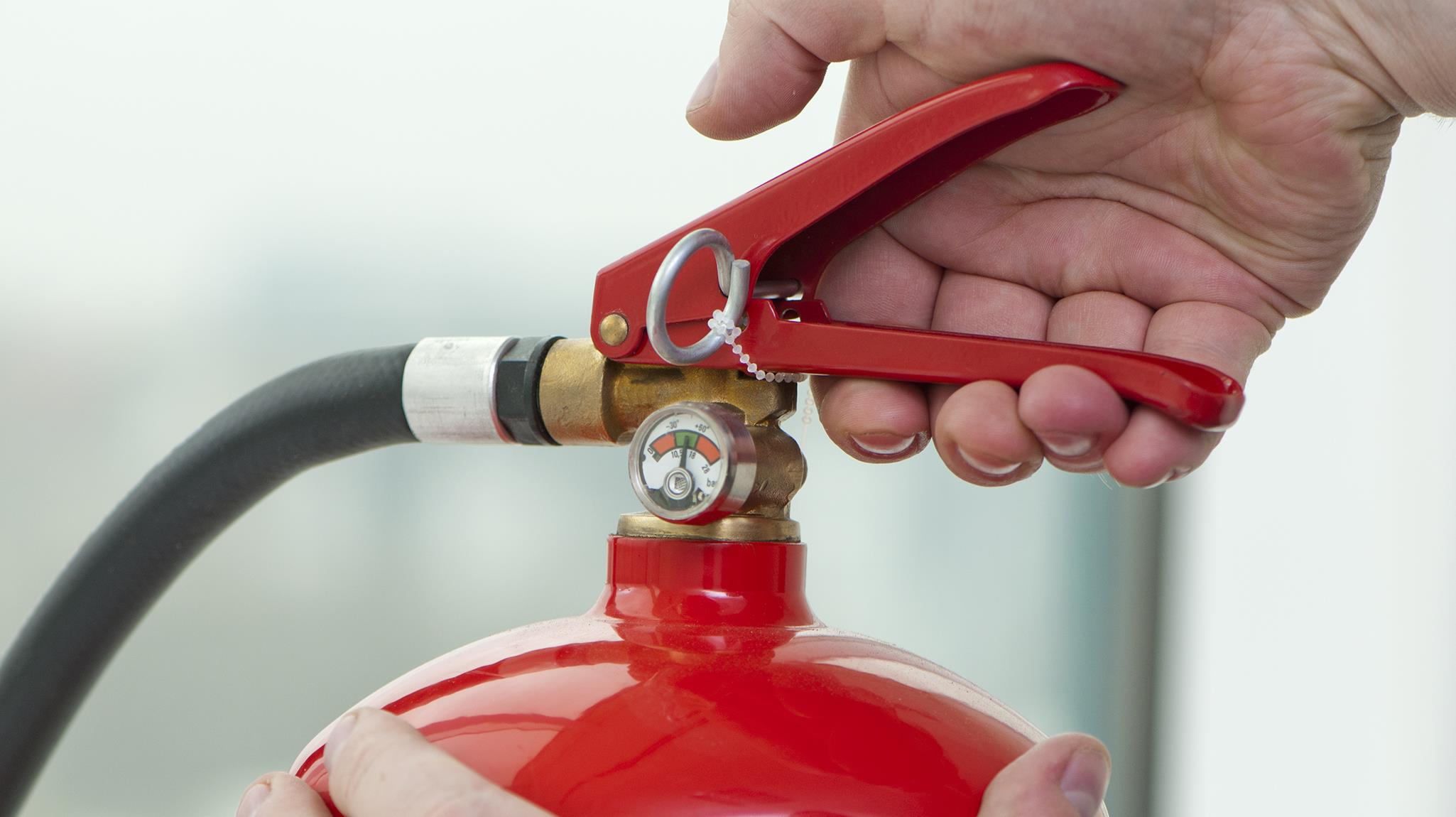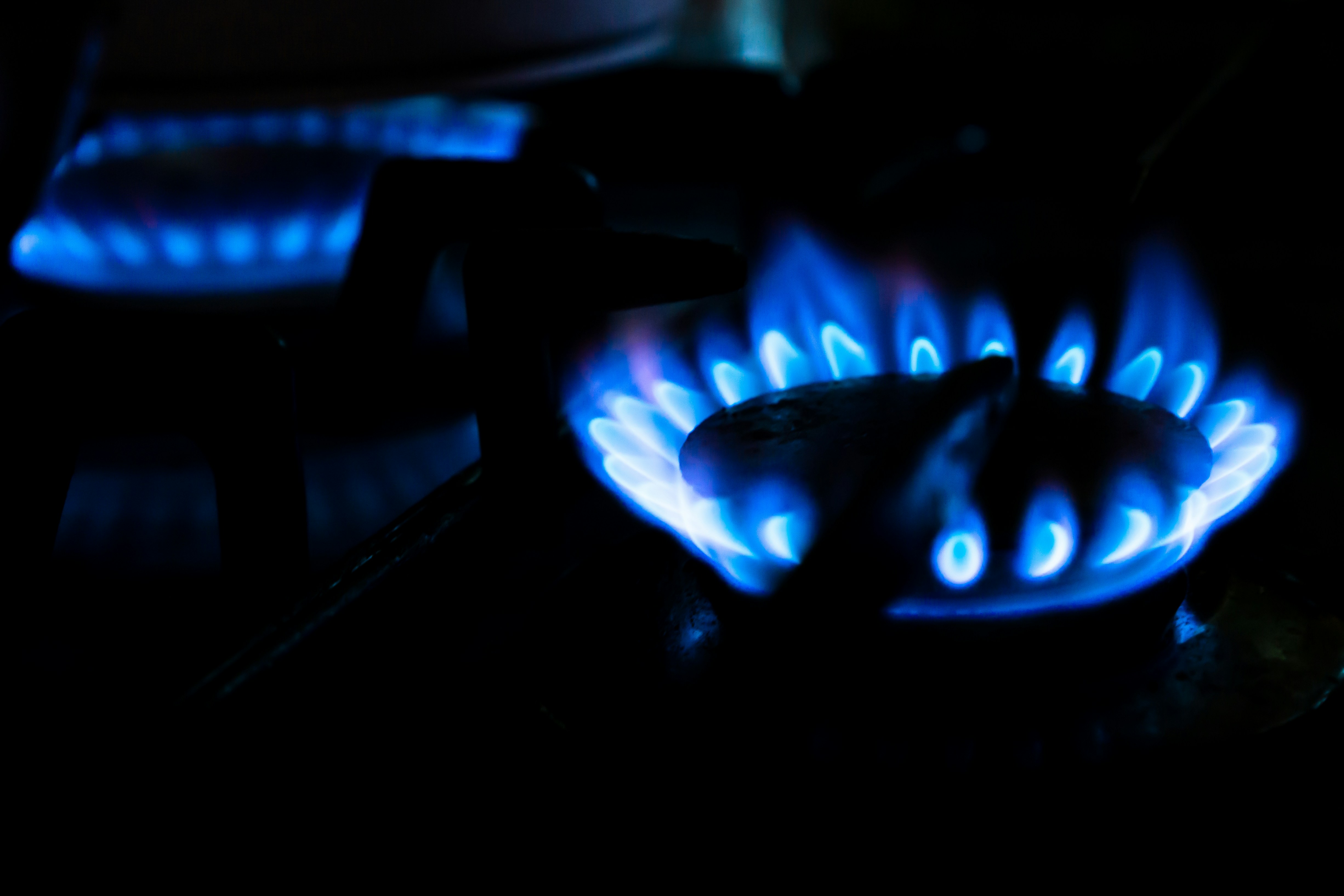What should I do if there’s a fire in my home?
If you discover a fire in your home or your smoke alarm goes off, take the following steps to stay safe.
Do not tackle the fire yourself. Leave it to the professionals.
If the door is closed to the room where the fire is, do not open it.
Tell everyone within your home to leave immediately by the nearest exit and close the door behind you. Before you open a door, check if it’s warm. If it is, don’t open it – fire is on the other side.
If there’s smoke, keep low where the air is clearer.
Everyone should assemble in a safe place, well away from any danger and where someone can meet the fire and rescue service.
Dial 999 and ask for the fire service, giving your full address and postcode.
What to do if your escape is blocked
If you can’t get out, get everyone into one room, ideally with a window and a phone. Put bedding around the bottom of the door to block out the smoke.
Call 999 then open the window and shout “Help, fire!”
If you’re on the ground or first floor, you may be able to escape through a window. Use bedding to cushion your fall and lower yourself down carefully. Don’t jump.
If you can’t open the window, break the glass in the bottom corner. Make jagged edges safe with a towel or blanket.
What to do if your clothes catch fire
Don’t run around, you’ll make the flames worse.
Instead, lie down and roll around, which makes it harder for the fire to spread.
Smother the flames with a heavy material, like a coat or blanket.
Remember, stop, drop and roll!

What fire safety checks do you carry out on my home?
We regularly carry out fire safety checks on your home to keep you and your family safe.
- weekly fire alarm tests
- fire risk assessments of communal areas to make sure they comply with fire legislation
- checking escape routes are clear
- seeing if your front door meets fire safety standards
- fitting special heat and smoke detectors
- annual check-ups on heat and smoke detectors if they’re linked to a fire panel
- making sure fire safety signs are up to date
We must do this by law. You can help us do these checks by keeping communal areas free of clutter, allowing our teams to carry out risk assessments, and not removing any safety information displayed.
If you’d like to carry out your own fire safety checks, follow this step-by-step guide from Safelincs, or email our fire and safety team at fireandsafetyteam@accentgroup.org.

Request a fire safety visit from your local fire service
Most fire services are happy to provide free home fire safety checks, where a firefighter will come to your home and identify any potential fire risks and advise you on how to make these hazards safe.
They’ll also check your fire alarms and provide you with an escape plan if there’s a fire.
What is the fire and evacuation policy where I live?
We will let you know what the fire policy is for your scheme or block when you move in.
We operate two main evacuation policies - a Stay Put procedure and a Full Evacuation procedure. Both of which are listed on our evacuation page.
You can find out which policy is in operation where you live on our evacuation policies page.
If you’ve got any questions or are unsure, just chat to your housing partner who will be happy to help – or get in touch with us.
What are the fire safety procedures in a block of flats?
There is specific guidance on fire safety for people who live in blocks of flats. Read on to find out the steps you should take to protect yourself, your family and your home if you live in a purpose-built block of flats.
In purpose-built blocks of flats, the doors and floors are designed to stop fire and smoke spreading and are built sturdily with this in mind.
Each flat becomes its own fire-resistant box – this is known as compartmentation. This means it’s very rare for a fire in one flat to affect another.
We undertake periodic checks of the compartmentation to ensure everything is up to standard in both purpose-built flats and converted flats. We also run a fire risk assessment programme, which we carry out regularly (every year up to every three years).
Five storeys or higher
If your block of flats is five storeys or more, we’ll inspect communal fire-resisting doors every three months and check fire-resisting font doors every year. This is on top of regularly checking compartmentation and running our fire risk assessment programme.
If you are at home when the fire and safety team come to assess your door, please allow them access.
Seven storeys or higher
If your block of flats is seven storeys or more, in addition to the above, we provide the fire service details of the external wall construction and offer extra safety features, more frequent and thorough inspections and more maintenance.
This includes:
- better signs so firefighters can quickly find the flat number they’re looking for
- enhanced inspection and maintenance regime of key firefighting equipment
- a secure box that provides the fire service with:
-
-
information of others who can provide them with assistance
-
floor plans showing the location of firefighting equipment, access routes and fire alarms
-
contact details for the member of our team responsible for fire safety
-
Key firefighting equipment
- inlets for dry rising mains
- inlets for wet rising mains
- outlets for dry rising mains
- outlets for wet rising mains
- smoke control systems
- suppression systems such as sprinklers or water misting systems
Cladding in seven-storey or higher blocks
All Accent blocks over seven storeys in height have now had older cladding replaced with fire-resisting cladding that conforms to the modern standards introduced in 2019. We’ve also ensured all our new builds meet these safety standards.
Building Safety Act 2022
In 2023, extra security measures were brought in under the Building Safety Act which apply to buildings that are even storeys in height (18m) or taller.
It requires us to register our taller blocks with the Building Safety Regulator. As a result, we have to comply with some extra requirements around building safety risks that can arise from the spread of fire or structural failure, with a focus on engaging our customers and how we handle their complaints.
If your block of flats is purpose-built and each home forms its own fire-resisting box through compartmentation (as described above), then it’s rare that a fire in one flat will affect another.
That means if there’s a fire in another flat, the safest thing for you to do is stay put in your own home.
This is known as the Stay Put procedure. As well as keeping you safe, it also means the fire and rescue service can fight the fire without having corridors and stairs blocked by evacuating residents.
With the Stay Put procedure, there will be smoke alarms in your flat, but not in the communal area.
If your flat has been converted from another building or is built to old standards, then a Full Evacuation procedure will be in place.
That means if there’s a fire in another flat, every flat in the block should evacuate to a place of safety. There will be fire alarms throughout the building and in communal areas like staircases and corridors.
What should I do if there’s a fire in my block?
The steps you should take in a fire depend on where you live, and which evacuation policy is in place.
Do not attempt to tackle the fire.
If the door is closed to the room where the fire is, do not open it.
Tell everyone within your home to leave immediately and ensure the door has closed behind you.
Once out of your flat, if it is safe to do so, call 999 and report the fire, giving the address, your flat number and postcode.
If it is not safe to call 999 outside your flat, leave this until you are outside the building.
Leave the building by the nearest emergency exit route and stairs – remember, this might not be the way that you normally use.
Do not run or use a lift if one is provided.
Everyone should assemble in a safe place, well away from any danger and where someone can meet the fire and rescue service.
If you are in your flat and feel safe, stay put.
If you feel unsafe or are in a common area away from your flat, leave the building by the nearest emergency exit route. Remember, this might not be the way that you normally use it.
Do not run or use a lift if one is provided.
Call 999 and report the fire, giving the address, postcode and as much information as you can.
If you need to be evacuated, you will be notified by the fire and rescue service or others dealing with the incident. This may be via an evacuation alarm if installed.
If you have evacuated your flat, do not re-enter it until told it is safe to do so by the fire service or other person in authority.
Stay Put procedure
If your block of flats is purpose-built and has compartmentation, then it’s rare that a fire in one flat will affect another. That means if there’s a fire in another flat, the safest thing for you to do is stay put in your own home. This is known as the Stay Put procedure.
Evacuating the building in a Stay Put procedure
Only evacuate the building if:
-
you are told to do so by the fire service or others dealing with the incident – this may be via an evacuation alarm if installed
-
you feel unsafe
-
your home is affected by heat or smoke
-
the fire alarm or evacuation alarm sounds throughout the building
If you are asked to evacuate, you should allow yourself to be escorted out of the building by the fire and rescue service or similar.
If you’re not being escorted, leave the building by the nearest emergency exit route and stairs. Remember, this might not be the way that you normally use.
Do not run or use the lift, even if it says it’s in service.
If someone’s been left behind in your flat, let the fire service know immediately.
Follow further instructions from the fire service or those dealing with the incident
If you have evacuated your flat, do not re-enter it until told it is safe to do so by the fire service or other person in authority
If you suspect a fire somewhere in your block or hear the fire alarm, leave the building by the nearest emergency exit route using the stairs.
Do not run or use the lift, even if it says it’s in service.
If someone’s been left behind in your flat, let the fire service know immediately.
Follow further instructions from the fire service or those dealing with the incident

How are you making cladding safe?
Since late 2018, it’s been illegal to use combustible materials that could catch fire in the external walls of buildings that are higher than seven storeys or 18m. This is because the government changed building regulations, saying that now all materials in high-rise buildings have to get an A1 or A2 rating – which means they’re impossible or very hard to set on fire.
We’ve complied with these regulations, replacing all old cladding in high rises built before 2018, and using A1 or A2 external wall materials in our new high rises.
In our mid-rise blocks under 18m tall, we do annual fire risk assessments, including checking the risk of fire spreading across external walls.
Sometimes it can be complex to make an accurate assessment of external wall materials. If our professional assessors are in any doubt, we call in a specialist to do a fire risk appraisal of the external wall construction in accordance with Publicly Available Specification (PAS) 9980.
Fire safety in our independent living schemes
Our independent living schemes are purpose-built or designed developments that provide self-contained homes to people aged 55 or over.
The doors and floors in our independent living schemes are designed to stop fire and smoke spreading and are built sturdily. Each home becomes its own fire-resistant box – this is known as compartmentation. This means it’s very rare for a fire in one flat to affect another.
We undertake periodic checks of the compartmentation and run a fire risk assessment programme on all our independent living schemes. We carry these out annually.
Each home also has its own heat and fire detectors linked to the alarm call system, and a separate fire alarm system in the common areas linked to its own fire panel.
Our independent living schemes use the Stay Put procedure. This is because each flat or dwelling uses compartmentation to make it a fire-resisting box, making it rare that a fire from one home will affect another. In most circumstances, the safest thing to do is to stay put.
As well as keeping our customers safe, the Stay Put procedure also means the fire and rescue service can fight the fire without having corridors and stairs blocked by evacuating residents.
If a fire starts in a common area like a communal lounge or laundry room, that area’s fire alarm will activate and customers should evacuate to a place of safety, known as the assembly point.
Anyone within their own flat or dwelling is safest staying put and might not hear the communal fire alarm from within their own home.
Your evacuation procedure, and other fire information, will be displayed on posters in your communal area, or speak to your specialist housing partner.
Scroll down to find the appropriate evacuation procedure for your block or scheme.
First, select the region in which you live and then find your block, Independent Living or Extra Care Scheme.
Do not attempt to tackle the fire. If the door is closed to the room where the fire is, do not open it.
Tell everyone in your home to leave immediately.
When you leave, make sure the door has closed behind you.
Once out of your flat, exit the building as quickly as possible via the signposted fire exits, and onceit is safe to do so, call 999 and report the fire, giving the address, your flat number and postcode.
Leave the building by the nearest emergency exit route and stairs.
Remember, this might not be the way that you normally use.
Do not run or use a lift (including stairlifts), even if there’s one in service.
Everyone should assemble in a safe place, well away from any danger and where someone can meet the fire and rescue service.
Do not return your flat or dwelling until you have been told it is safe by the fire service.
If you’re in your flat and feel safe, stay put.
If you feel unsafe or are in a common area away from your flat or dwelling, leave the building by the nearest emergency exit route. Remember, this might not be the way that you normally use.
Do not run or use a lift (including stairlifts), even if there’s one in service.
Call 999 and report the fire, giving your address, postcode and as much information as you can.
If you need to be evacuated, you will be notified by the fire and rescue service or others dealing with the incident. This may be via an evacuation alarm if installed.
If you have evacuated your flat, do not re-enter it until told it is safe to do so by the fire service or other person in authority.
Only evacuate the building if:
- you are told to do so by the fire service or others dealing with the incident – this may be via an evacuation alarm if installed
- you feel unsafe
- your home is affected by heat or smoke
If you are asked to evacuate, you should allow yourself to be escorted out of the building by the fire and rescue service or similar.
If you’re not being escorted, leave the building by the nearest emergency exit route and stairs. Remember, this might not be the way that you normally use.
Do not run or use the lift, even if it says it’s in service.
If someone’s been left behind in your home, let the fire service know immediately.
Follow further instructions from the fire service or those dealing with the incident.
If you have evacuated your flat, do not re-enter it until told it is safe to do so by the fire service or other person in authority.
Mobility scooters use batteries that can cause a fire risk and need to be stored correctly. If you live in one of our independent living schemes and want to buy a mobility scooter, please chat to your specialist housing partner beforehand to discuss where you can safely store it.
How can I reduce the risk of harm from fire?
Take a look at our tips to help reduce the risk of harm from fire.
Make sure you know what to do if your smoke alarm goes off during the night. If you live with other people in your home, sit down and discuss this together so that you all have a clear plan. You may wish to write this down and practise it from time to time.
Keep your doors closed to stop the spread of smoke and fire. It’s best if you do this all the time, but you should close all the doors in your home before going to bed.
Make sure your escape routes are clear and free from obstacles, clutter or large items.
Check your home before you go to bed. Make sure all fires are fully extinguished and electric or gas appliances are switched off and unplugged where possible. Empty ashtrays outdoors and close all doors.
If you live in a home with communal corridors, it’s vital they’re kept clear of hazards or obstructions. This is so buildings can be safely evacuated if they ever need to be. As well as restricting your escape route, items blocking the way could also catch and spread fire. By law, we ask that you do not smoke in any of the common areas.
If someone is leaving clutter in your communal corridors, find out more about steps you can take on our page about antisocial behaviour.
Obstructions include:
- mobility scooters, e-scooters, motorbikes, mopeds or motor scooters
- pushchairs, buggies and pram
- upholstered furniture
- bedding, mattresses or carpet
- white goods and ovens
- coat hooks, washing lines or other clothes storage
- barbecues
- fuel containers or gas bottles
- portable electrical goods, TV sets, music players etc
- shopping trolleys
- lockers, bookcases, shelves etc
- rubbish, black bin bags, wheeled bins
There are some exceptions which might be allowed including:
- push bikes stored safely out of the way in understairs, alcoves or recesses (not including panniers)
- small amounts of non-combustible festive decorations
- thin door mats in good condition that would not constitute a trip hazard
- pictures secured to the wall and enclosed in glass or perspex
- small ceramic, glass or non-combustible ornaments, and plant pots containing real flowers or plants - these must be in small quantities primarily located on window sills or ledges where they are unlikely to be knocked over
What is a fire door and how does it prevent fire?
All closed doors can help hold back smoke, flames and heat from a fire, giving you time to evacuate.
Fire doors are special doors specifically designed to withstand fire for a certain amount of time, usually around 30 minutes. They’re sometimes called fire-resisting or fire-rated doors.
They’re not the same as fire exit doors, which help you exit from a building in an emergency and are often operated with push bolts or push pads.
Fire doors are usually found in communal areas like corridors, staircases, or as the front door of your home.
You can tell if a door is a fire door because it will:
- be 44mm (13/4 inches) thick or more
- have a seal fitted around either the edge of the door or in the frame
- have a self-closing device, unless it is a cupboard door
- have at least three hinges and a positive latching mechanism
If it is a cupboard door, will be fitted with a notice advising it to be kept locked shut, and if it has any glazing this will be fire-resisting.
Never tamper with a fire door
You can help us keep you and your neighbours safe by leaving fire doors alone.
- never remove, disengage or tamper with a fire door’s self-closing device, or prop or wedge it open
- don’t cause any damage to fire doors
- don’t repair or fit fire doors yourself
- never drill or cut into your front door, or alter or repair it yourself
- don’t let anyone else tamper with or damage fire doors.

Who can I contact about fire safety?
We’re here to answer your questions about fire safety.
You can speak to someone in person – ask your housing partner, homeownership partner or specialist housing partner for fire safety advice.
For technical questions, there’s a fire and safety team assessor in each region who can assist and can be contacted at fireandsafetyteam@accentgroup.org.
Day-to-day repairs can be reported via the form on this page, while emergency repairs should be reported to 0345 678 0555 and put forward to our Technical Hub team.
If you wish to raise serious concerns, you can contact our Chief Operating Officer, Julie Wittich, who is our designated Responsible Person under fire safety legislation, and our Accountable Person under building safety legislation. She’s supported by our Head of Building Safety & Information, Kelly Privitera.



